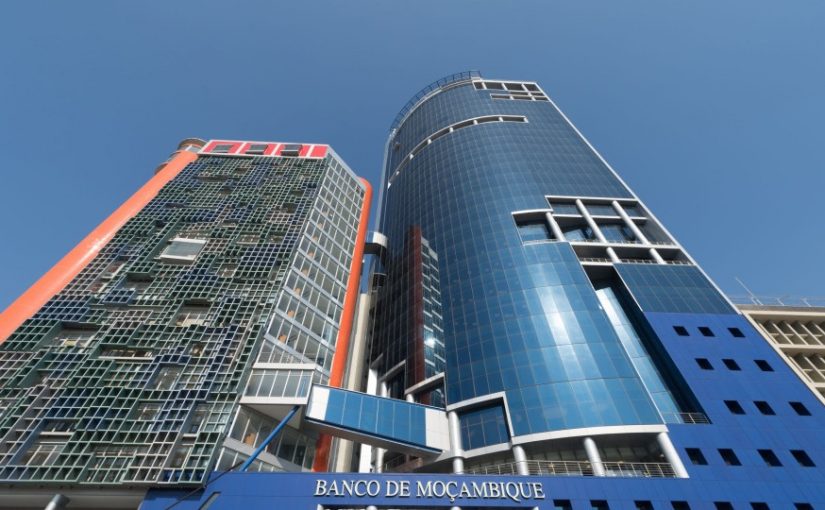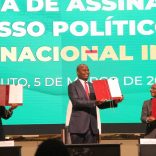Mozambique: Central bank warns of risk of inflation rising in the medium term
Mozambique: Central bank eases monetary policy, cuts interest rate to 16.5%

Image: Lusa
The monetary policy committee (CPMO) of the Bank of Mozambique decided on Wednesday to lower the monetary policy interest rate, known as MIMO, from 17.25% in force since September 2022, to 16.50%, the institution announced.
“This decision is underpinned by the consolidation of the outlook for maintaining inflation in single digits in the medium term, in a context where the assessment of the risks and uncertainties associated with inflation projections is more favourable,” the Bank of Mozambique said after the CPMO meeting.
The governor of the central bank, Rogério Lucas Zandamela, had already agreed to adjust the monetary policy adopted last year, given the containment of price rises, according to a letter to the International Monetary Fund (IMF).
“With inflation now returned to the centre of the target range, the Bank of Mozambique will carefully monitor the need to adjust monetary policy to continue fulfilling its mandate of price stability,” reads the letter dated December 19, 2023, consulted last week by Lusa.
READ: Bank of Mozambique admits adjusting monetary policy to contain price rises
In the letter, dated December 19, which is part of the third evaluation and approval of the Extended Credit Facility (ECF) programme for Mozambique, concluded this month by the IMF,, the governor of the central bank recalls that in March 2022, when inflation was “still below the target”, the institution reacted to an “an increase in expected inflation” and to a “gathering economic momentum following the lifting of COVID-related restrictions”.
This reaction implied an increase in the policy rate (MIMO) by 200bps, from 13.25 percent to 15.25 percent, followed by a second 200bp increase in September 2022.
“In doing so, the BM’s policy aimed to proactively forestall risks of de-anchoring inflation expectations, while avoiding undermining the recovery of demand,” the letter reads.
As for the inflation outlook, the letter concludes as follows:
“In September 2023, headline inflation for Mozambique stood at 3.9 percent year-on-year. At the same time, CPI excluding fruit, vegetables and administered prices recorded 4.1 percent year-on year—close to the centre of the BM target range of ‘inflation of one digit’. The current baseline scenario is predicated on stable global food and fuel prices, with higher upside risks stemming from the unfolding crisis in the Middle East, the El Nino weather event and domestic fiscal pressures. Meanwhile, the tight policy stance is expected to keep expectations firmly anchored around the middle of the target range. In this context, headline inflation is expected to remain near current levels and end 2023 at around 4 percent, followed by a moderate acceleration towards 6 percent at end-2024 and 2025.”
“Continued fiscal consolidation efforts are warranted to reduce financing needs and contain debt vulnerabilities. With inflation expectations well anchored, tighter fiscal policy, and weak non-mining growth, there is scope for gradual monetary policy easing,” the IMF said when approving the third assessment of the ECF.
The governor of the Bank of Mozambique said in November that the current slowdown in inflation was the result of the “restrictive monetary policy stance” adopted in recent months by the central bank but emphasised that “high uncertainties prevail”.
Zandamela signalled that annual inflation “has been decelerating” since the beginning of the year, having stood at 4.6% in September (closing at 5.30% in December), “after having peaked at 12.9% in August 2022”: “This deceleration trajectory essentially reflects the combined effect of exchange rate stability and the restrictive stance of monetary policy as well as the fall in food and fuel prices on the international market.”
He added that “high uncertainties prevail as to the magnitude of the impacts of current risks”, particularly from abroad, “amplified by volatility in the financial markets, which has required increasingly prudent monetary policy action”.
“This is why monetary policy has remained restrictive, with the monetary policy interest rate – MIMO rate – set at 17.25%. In addition, and in order to deal with the excess liquidity in the banking system, we decided to increase the reserve requirement coefficients for domestic and foreign currency liabilities by 28.5% and 28% to 39.0% and 39.5% respectively,” he recalled.











Leave a Reply
Be the First to Comment!
You must be logged in to post a comment.
You must be logged in to post a comment.